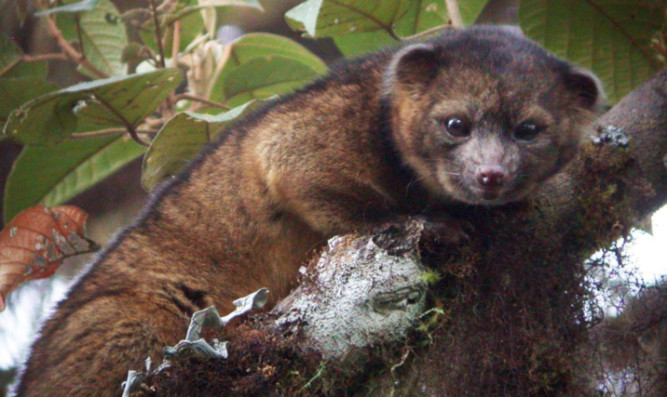A creature looking like a cross between a house cat and a teddy bear has been named as a new species after being wrongly identified for 100 years.
The woolly-furred olinguito, which weighs 2lb (0.9kg), is related to raccoons and coatis and lives in the cloud forests of Colombia and Ecuador.
For more than a century it was mistaken for its larger close cousin, the olingo.
But an examination of the skull, teeth and skin of museum specimens has now confirmed that it is a different species the first New World carnivore to be identified in 35 years.
In a report on the discovery, US scientists from the Smithsonion Institute in Washington DC described the creature’s appearance as “a cross between a house cat and a teddy bear”.
Compared with the olingo, its teeth and skull are smaller and shaped differently, and its orange-brown fur is longer and denser.
“The discovery of the olinguito shows us that the world is not yet completely explored, its most basic secrets not yet revealed,” said Dr Kristofer Helgen, curator of mammals at the Smithsonian’s National Museum of Natural History.
“If new carnivores can still be found, what other surprises await us?
“So many of the world’s species are not yet known to science. Documenting them is the first step towards understanding the full richness and diversity of life on Earth.”
The animal’s scientific name is Bassaricyon neblina. Bassaricyon is a genus, or family, of tree-living carnivore that includes several different species.
After identifying museum specimens, the researchers travelled to the northern Andes to see if any olinguitos remained in the wild.
Records showed that the creature lived high in the mountains, at elevations of 5,000 to 9,000 feet above sea level. Grainy footage from a camcorder video provided a lucky early lead.
Eventually, the team discovered olinguitos living in an Ecuadorian forest and spent a number of days observing the creatures.
They learned that the olinguito is mostly active at night, eats fruit as well as meat, rarely leaves the trees, and has one offspring at a time.
The animal’s habitat is under pressure from human development, said the scientists writing in the journal ZooKeys. An estimated 42% of olinguito habitat has already been urbanised or converted to agriculture.
